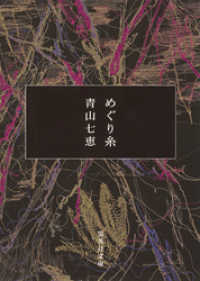- ホーム
- > 洋書
- > ドイツ書
- > Humanities, Arts & Music
- > Music
- > musical equipment
Description
(Text)
Seit ihrem Erscheinen als Urtextausgabe haben sich die beiden ersten Hefte von "Iberia" aus dem G. Henle Verlag einen festen Platz in der Welt der Pianisten erobert. Nun folgt der dritte Teil, in dem Albéniz aufs Neue seine Kenntnis des europäischen Konzertrepertoires mit Elementen der spanischen Volksmusik verschmilzt: In "El Albaicín" lässt er die geheimnisvolle Stimmung des Zigeunerviertels von Granada lebendig werden, gefolgt von temperamentvollen Flamenco-Anklängen in "El Polo". Zum Schluss illustriert Albéniz musikalisch die quirlige Atmosphäre eines ehemals jüdischen Stadtteils von Madrid ("Lavapiés"); dabei streut er, in Anspielung auf einen Drehorgelspieler, auch einige dissonante Farbtupfer ein._
Mehr zu dieser Ausgabe im Henle-Blog.
(Table of content)
Iberia · Drittes Heft El Albaicín El Polo Lavapiés
(Text)
Since their publication as Urtext editions, the first two volumes of "Iberia" issued by G. Henle Publishers have become an established part of the pianists' world.
Now comes the third book, in which Albéniz once again fuses his knowledge of European classical music with elements of Spanish folk music. In "El Albaicín" he evokes the mysterious atmosphere of the gypsy quarter in Granada, followed by hints of temperamental Flamenco in "El Polo". At the end, Albéniz depicts the exuberant mood of a former Jewish quarter in Madrid ("Lavapiés"); in so doing he intersperses the music with some dissonant dashes of colour, an allusion to an organ grinder._
Read more about this edition in the Henle Blog.
(Table of content)
Iberia · Third Book El Albaicín El Polo Lavapiés
Depuis leur parution en édition Urtext, les deux premiers volumes d'«Iberia» publiés aux Editions G. Henle ont acquis une position de force dans le monde des pianistes. Voici maintenant la troisième partie, dans laquelle Albéniz unit une nouvelle fois sa connaissance du répertoire concertant européen à des éléments de la musique populaire espagnole. Dans «El Albaicín», il fait revivre l'ambiance mystérieuse du quartier gitan de Grenade puis enchaîne dans «El Polo» sur les fougueuses sonorités flamenco. Pour finir, Albéniz illustre musicalement l'atmosphère pétulante d'un ancien quartier juif de Madrid («Lavapiés»); ce faisant il disperse aussi çà et là, faisant ainsi allusion à un joueur d'orgue de Barbarie, quelques touches de couleur dissonantes._
Voir le Henle-Blog pour savoir plus sur cette édition.








